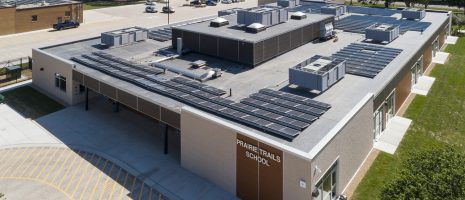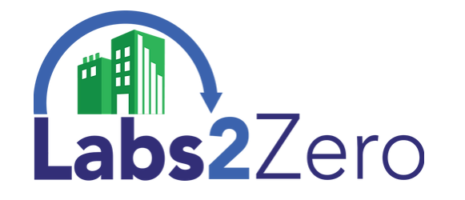21 trends: A blueprint of the year ahead

Acuity adaptability in healthcare, a reboot for hospitality projects, expanded implementation of crisis management planning – these are among 21 potential AEC trends for 2021 gathered from IMEG’s national market and service leaders. Read on for a blueprint of the year ahead.
- Acuity adaptability in healthcare. “COVID-19 has greatly challenged the healthcare market’s traditional delivery of patient care, overwhelming many facilities’ capacity. In the year ahead, many organizations will take a closer look at the acuity adaptable delivery model, or some variation, which allows hospitals to flex rooms, wings, or entire floors to various levels of care based on need. Whether it is true acuity adaptability – keeping each patient in one room the entire time and bringing the care to them – or a hybrid model, flexibility will be a common discussion point for healthcare design in 2021.” – Mike Zorich, Healthcare Director
- Virtual or contactless care. “With a vaccine actively being rolled out, 2021 will continue to challenge the way patient care is given and how we design for the future. Virtual or contactless care will be front and center as will the continued growth of the digital experience for the patient, family, and caregivers. Healthcare leadership will focus on the patient and their care teams, enabling technologies to ease and simplify safe and quality delivery of care.” – Corey Gaarde, Healthcare Information Technology Project Executive
- Focus on health and wellness in architectural lighting. “From revitalizing established strategies and concepts such as UVGI and biophilic design to novel cross discipline approaches such as integrated acoustic luminaires and the marriage of technology and lighting systems, we are seeing a clear reinvention in the way we design the built environment.” – Architectural Lighting Leader
- Dramatic change in border infrastructure work. “With the impending change in administrations, border protection will move toward active technology-based detection and observation supported by staff farther from the border. The focus on physical barriers will be replaced by an increased emphasis on facilities needed to train and support U.S. Customs & Border Protection employees and migrants who cross at the border.” – Steve Rhoades, Vice President of Federal Solutions
- Re-evaluation of DHAs. “Our industrial clients are talking about the recent National Fire Protection Association code updates for dust hazard analysis (DHA) and how they can address the changes, which include standards for preventing fires and dust explosions in wood processing and woodworking facilities, agricultural and food processing facilities, and the manufacturing, processing, and handling of combustible particulate solids. These codes require DHAs be re-evaluated every five years.” – Kelly Altes, Industrial Market Leader
- Continued advancements in electric vehicle testing and autonomous driving. “Our clients are transforming the automobile industry, and we’re excited to be a part of developing the infrastructure needed to support these advancements.” – Keith Vandenbussche, Vehicle Research & Development Market Leader
- Expanded use of reality capture. “3D laser scanning, especially in medical facilities, will be an innovative way to collect measurements while limiting contact with surfaces; increase visualization (while reducing the number of personnel needed on site and eliminating the need for return visits); and increase design confidence with updated as-builts.” – Eric Vallejo, Director of Civil Engineering
- Cloning buildings with digital twins. “Created through 3D building information modeling, 3D laser scanning and other technologies, a digital twin is a virtual model of robust and highly accurate data that mirrors planned or existing structures and infrastructures. Such digital information can be used to optimize designs for new buildings and model how renovations and expansions will impact operations in existing buildings.” – Client Executive Mike Lawless
- Hope for the entertainment sector. “Even though the global amusement parks market is experiencing a decline due to the COVID-19 pandemic, there’s hope for 2021 and beyond. According to Market Insights Reports, experts predict the market will recover and grow in 2021 and reach $89.5 billion in 2023.” – Nestor Ignacio, Entertainment Market Leader
- Hope for the hospitality market, too. “With the distribution of the COVID-19 vaccines to the U.S. population, owners and developers are hopeful that projects that have been on hold since last spring or summer will be reinitiated, possibly by late March. While this may not apply to all types of hotel projects, the prospect of design activity returning mid-year is a very welcome sign for an industry that has been ravaged by the pandemic.” – Bob Winter, Director of Hospitality
- Transportation infrastructure funding increase at the federal level. “Both (political) parties and the incoming president will focus on boosting economic recovery with a promise to fund infrastructure with an immediate $300 billion and long-term $2 trillion transformation.” – Corey Stout, Transportation Market Leader
- Embodied carbon in the crosshairs. “I’m working with other sustainability leaders in the industry to develop metrics for embodied carbon associated with MEP systems. We’ve made good progress in reducing operational energy in the past 20 years, but now we’re shifting our focus to carbon reduction in construction/manufacturing of the MEP systems.” – Adam McMillen, Director of Sustainability
- Airport HVAC scrutiny. “The COVID-19 pandemic and similar scenarios pose an imminent threat to travelers. It’s necessary to isolate and contain the source, if detected, so design for environmental controls, space conditioning, and ventilation systems will need a different perspective and consideration.” – Naseer Ahmed, Aviation Market Leader
- Improved energy efficiency in laboratory design. “Laboratories are one of the building types with the largest energy use, so designers must consider how to optimize ventilation needs for lab safety without spending energy to over-ventilate and find technologies to improve building-level sustainability and reduce the carbon footprint. Additionally, though labs are already well-suited for addressing many of the risks associated with airborne viruses, the impact of COVID-19 has placed a renewed focus on how to make labs more resilient in the event of another pandemic or natural disaster.” – Brandon Fortier, Science & Technology Market Leader
- Planning for organizational resilience. “In response to the COVID-19 pandemic, many organizations are rapidly creating crisis management teams and processes to be better prepared for various types of emergencies, even beyond the pandemic. The crisis management process provides a smooth and rehearsed plan to deal with emergencies and have better outcomes.” – Ryan Searles, Senior Consultant, Security Assessment and Protective Services
- Let’s hear it for acoustics! “Acoustics design has clearly moved into a more regular architectural service. We already find lighting elements that have acoustical attributes on lighting fixtures. There’s also a demand for higher quality conferencing that has increased institutional budgets, and new standards – such as WELL and FGI – are required by the government.” – David Wright, Senior Acoustics Technical Specialist
- New floorplans and amenities for housing. “Multifamily housing continues to be a strong market, but there are some changes to be expected in 2021. Designs will trend toward having multiple smaller common spaces versus the very large spaces common in the past. Buildings are also trending toward smaller floorplans with multiple buildings on a site instead of one or two large buildings, offering the same number of units on site overall, just distributed differently. Also, active adult (55+ independent living) is a growing market with a focus on an amenity-rich environment, including everything from pools to pickleball and a maintenance-free lifestyle.” – Donovan Geske, Housing Market Leader
- Designing a safe return to the office. “Many companies are considering ways to safely bring their employees back to their offices amid COVID-19, including socially distanced lobby screening, prescreening solutions to improve processing, using technology to assist with processing and contact tracing, and implementing touchless access in their facilities.” – Charles LeBlanc, Security Project Executive
- New life for mass timber. “The 2021 International Building Code allows mass timber to be used in lieu of traditional tall building materials, meeting the demand for more tall mass timber buildings across the country. Now these structures can be built safely and to code.” – Heather Heidenreich, Director of Structural Engineering
- Energy use monitoring and corrections. “More clients will see the value of post-occupancy monitoring and ongoing commissioning in their facilities. This identifies less-than-optimal operating conditions causing additional energy consumption that might otherwise go unnoticed, with responsive maintenance enacted to prevent further wasted resources, occupant discomfort, air quality issues, and damage to equipment.” – Lincoln Pearce, Commissioning Leader
- Reality check for stakeholders. “Look for continued growth in the use of virtual and mixed reality to present building design to stakeholders in a way that gives them a greater understanding of their project and the opportunity to identify shortcomings prior to construction.” – Sarah Garthaus, Director of Virtual Design











